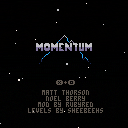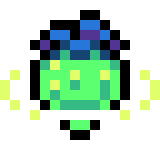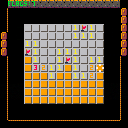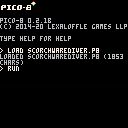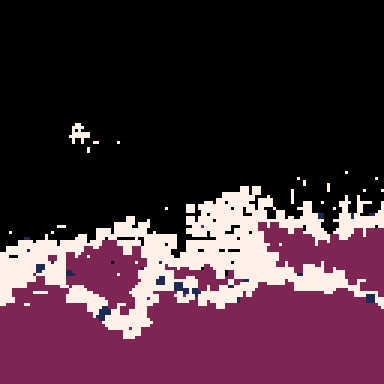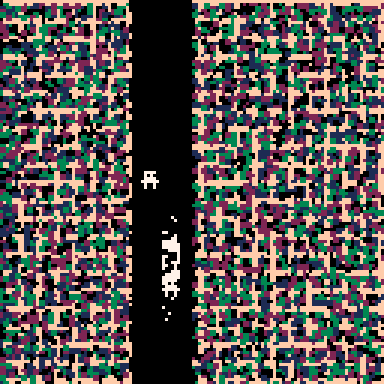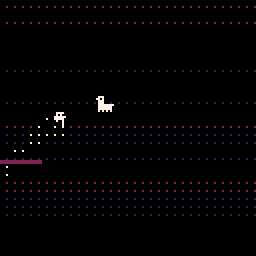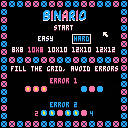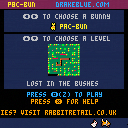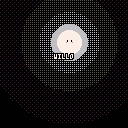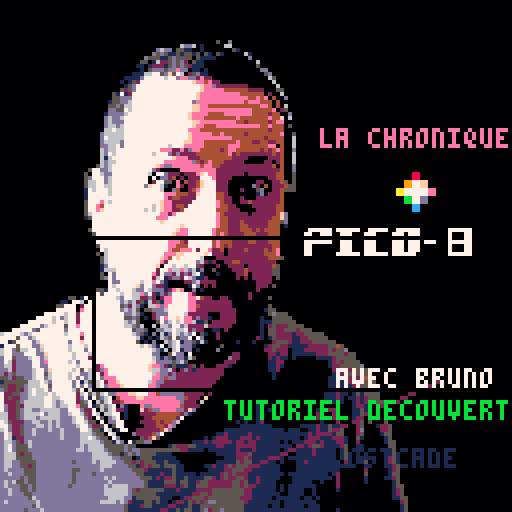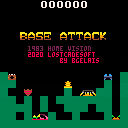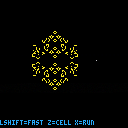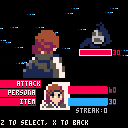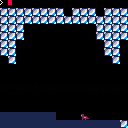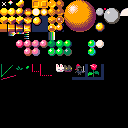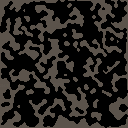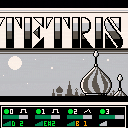About
In Lost Halloween, you'll choose a costumed character and go trick-or-treating through a neighborhood. At each house you'll have to navigate through their yard, making your way up to the door bell. Ring it, get candy, then on to the next house! But beware, weird things can happen on Halloween. Hey, did that garden gnome just move?
Controls
- Arrow keys: move cursor or character. You can move diagonally by pressing two move keys at once.
- (Z): attack
- (X): interact, eat candy (if available and HP<3), advance dialog
Features
- Five playable characters
- Thirteen houses to visit
- Awesome music by Gruber (@gruber_music, PICO-8 Tunes vol1 and 2)

INTRO
After a post where I was asking this same question, and thanks to the comments I've received, I've decided to create a guide on how to upload a game on itch.io in a nice way.
By default, if you upload a game on itch.io you obtain something like this: FartJumper (itch.io)
(not a game of mine, I use this just to show the difference, if it is a problem I'll remove the link)
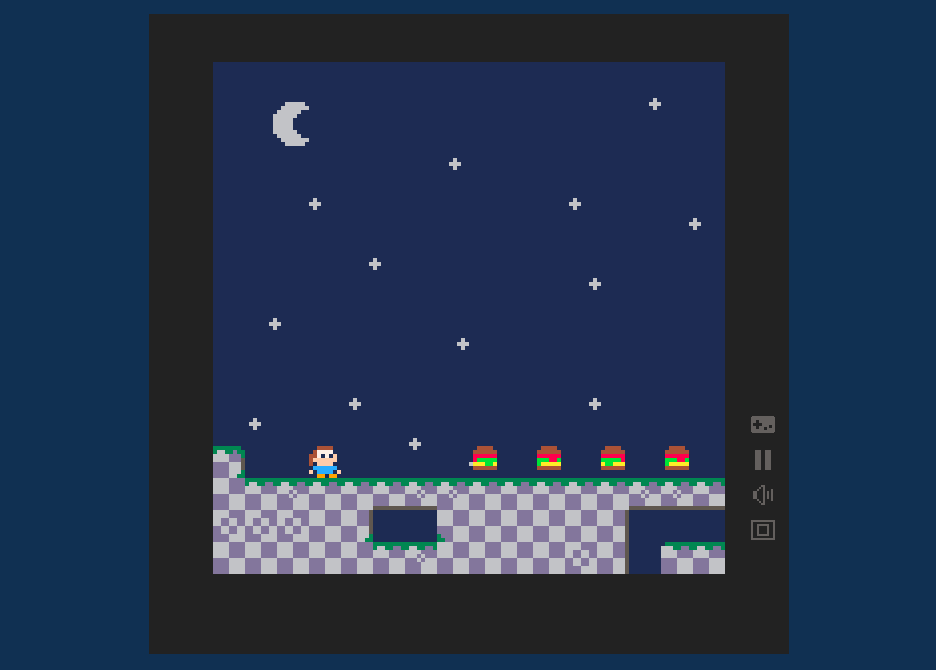
As you can see there are a lot of borders and I personally don't like them.
I made it so that the game run like this: Not Enough (itch.io)
(this is one of my game)
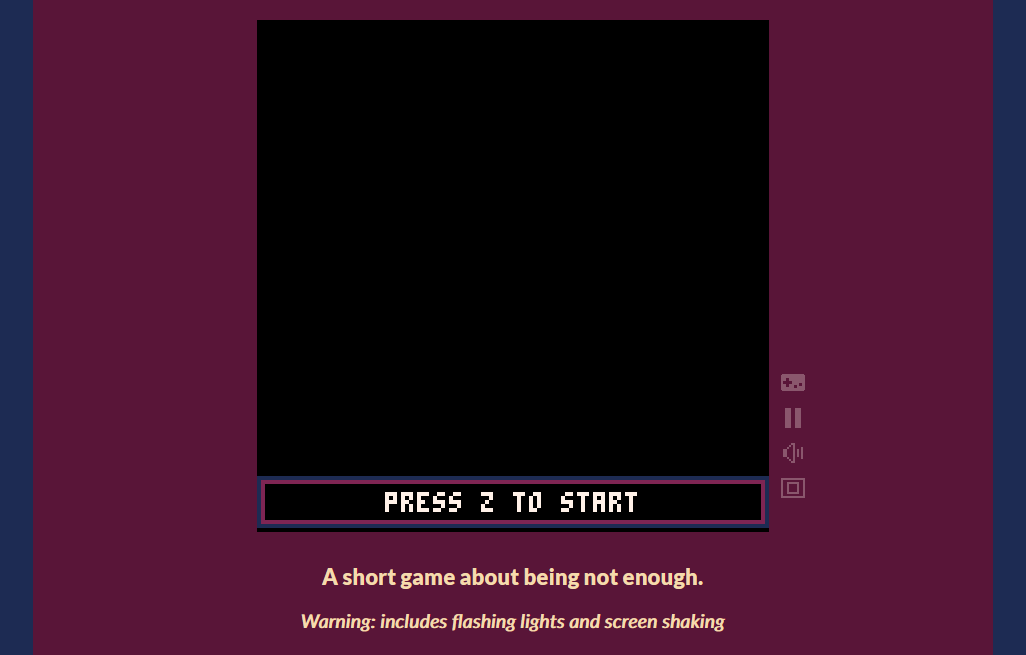
In my game I also enabled the autoplay and made some adjustment to it to make it even better, but I will explain that later on.
GUIDE
TL;DR
You can download this index.html and use it mostly as it is: index.html
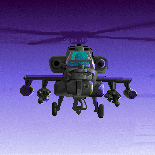
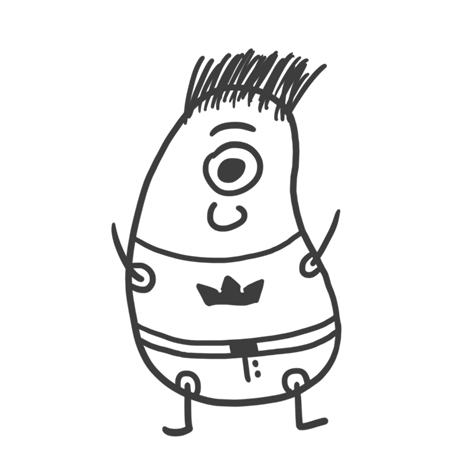



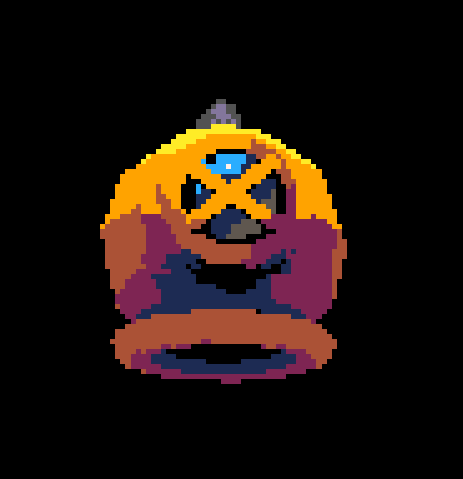
So, I'm currently learning how to make games with Pico-8. Yeah.
I used the Cave Diver tutorial in a zine made by @MBoffin
You can find the zine here: https://mboffin.itch.io/gamedev-with-pico-8-issue1
With all that said, I might return to this eventually, but who knows at this point.
However, I would appreciate some feedback and I might consider them for future games.
Thanks and I hope you enjoy this Flappy Bird derivative. Hehe.
Binario is an implementation of the puzzle by the same name, invented by Adolfo Zanellati. I know this game from the Simon Tatham's puzzle collection, as it's one of my favourites. The algo to create the levels is bad, basically a less than brute force but still pretty brutal, and it takes many tries for the higher levels.
Mouse is supported and makes everything better, but it's still possible to play with key controls too.
I added a clue system to make it more engaging. I wanted to add also something like a timer that would fill up and down according to the moves and the state of the game, but finally decided against it since it wouldn't really add too much and probably no one will play this version anyways. It was an entertaining exercise in Pico8, and hopefully someone finds it interesting.
P8C-BUN
Help your chosen bunny cover each level with poo then escape down a rabbit hole. Don't get caught by the fox or anything else that's out to get you!
Finish all 16 levels without restarting to achieve "Iron Bun" or just try to post a high score. Start at whatever level you like.
Controls
- Use the d-pad/arrow keys to direct your bunny.
- z/c/(O) to show where you haven't pooed yet.
- x to paws and return to the title screen.
- You can toggle the music or return to the title screen from the menu as well.
Tips
- The buns will keep running in the direction you choose until there's no clear path in front of them so there's no need to hold down the arrow keys.
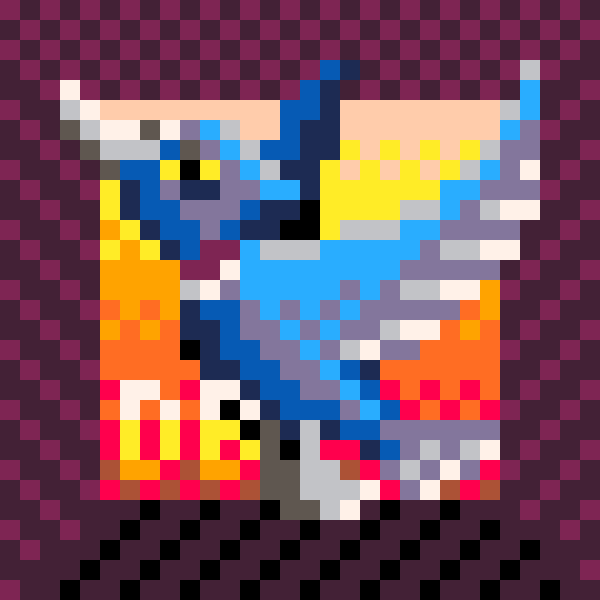


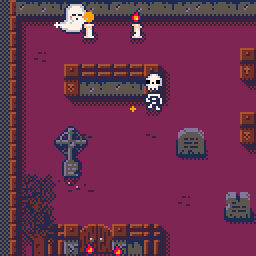

Skelliwags have taken over the graveyard and its up to Willo to kick them out!
Help little Willo sneak around, go 'woo', blow out candles and get up to all sorts of spooky stealthy fun in this short stealth'n'spook-em-up
Featuring
- 8 action packed graveyards to spook about in
- MGS style ranking system, can you get all 8 platinum medals?
- Skelliwags, floating eyeballs, tombstones and occult pentagrams
- One adorable little ghost, Willo
Game by @danhowardgames
Music and SFX by the outrageously talented @gruber_music


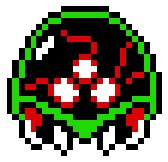





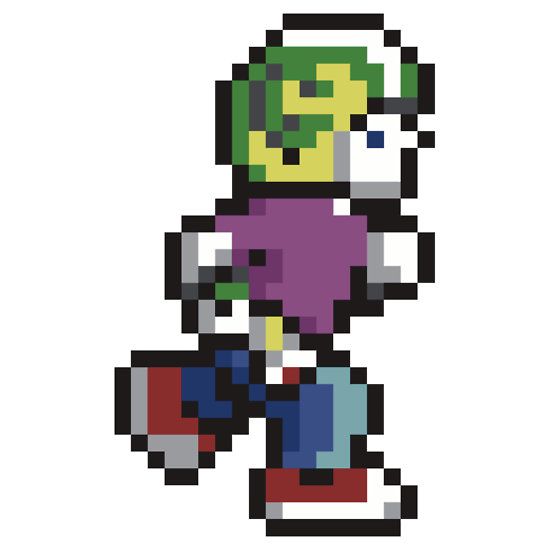
Here's a pretty minimal implementation of Conway's Game of Life for PICO-8. It has a basic performance optimization (it only updates the active area of the grid), and you can see the active area adjust by setting dbg=true at the top of the code.
That said, it gets pretty slow pretty quickly for larger simulations.
You set up the grid as follows:
Arrow keys -- move the cursor around.
Z key -- toggle a given cell to active/inactive.
X key -- start / stop the simulation.
If you're unfamiliar with the Game of Life, google it :-).
An easy starting point for a cool pattern is a ten cell contiguous row (10 connected horizontal cells).
There are better PICO-8 Game of Life carts, but I had a lot of fun making this.
A little persona battle system concept I worked on as part of a school project, I may expand it later with different enemy types, more items, and maybe XP
Use the arrow keys to scroll the menu
Z to select
X to go back
You begin with 60HP, 30SP, and 3 medicines
Enemies have a chance of dropping a medicine after defeat
See what streak you can get!
I decided to make a Tweetcart today and it ended up being a simple little Jack-o-Lantern generator, but I found it entertaining enough to watch that I figured I'd release it here for y'all too!
There's no controls whatsoever, it just periodically generates a new pumpkin. The quality of the expressions varies but overall I'd say they come out remarkably well.

A small showcase of how to generate random 2D caves using a cellular automaton. Inside the code there are some parameters worth tweaking, maybe I'll add an interface for this in a later update.
The automaton is really simple: it changes based on the majority of it's neighbours and remains unchanged when tied.
Parameters:
- width and height - self explanatory, cave will be displayed in the upper-left corner
- live and text color - coloring of the cave and the "reset" message
- iterations - more iterations of the automaton mean less small noise and more smooth walls. Over 20 will not change much.
- density - chance of a cell being dead at the start. Very susceptible to change, more will create wider corridors.
I saw several bug reports about gamepads being mapped incorrectly, but I have another issue.
One of my gamepad (a Thrustmaster Score-A) works nicely in PICO-8 on macOS, but it doesn't get recognised in the rpi build. The sdl-jstest tool recognises it in both systems.
Another pad model gets recognised on both systems, so the rpi build of PICO-8 is somewhat working.
Note: I'm using PICO-8 v.0.2.1b on both systems.
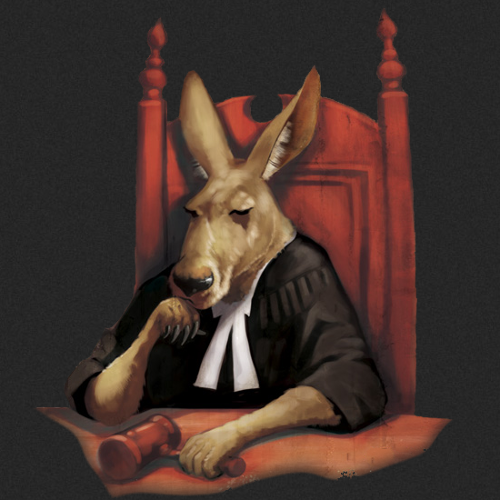

That's a project I though I lost long ago. I was working on it on my PocketCHIP, tell you how old this is and had an issue with it and needed to reinstall everything and lost all the cart I was working on, this one was one of them, and I'm delighted that I had a copy somewhere else.
So this one is date from the 19 May 2016 (at least last modification of the file) and was at a time I was playing around trying to replicate exisiting music in PICO-8 (as for the Megaman in another cart of mine already published here) Also had fun working on replicating the screen from the original game.
I really like how the two song render in PICO-8, I'm pretty sure I started to work on some other but lost all the work :(

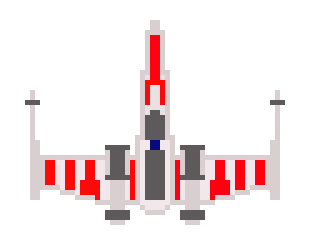








 2 comments
2 comments

